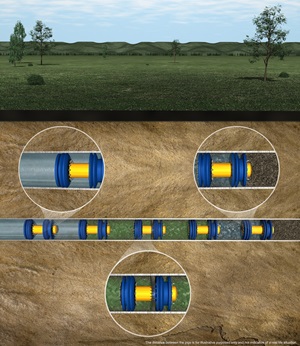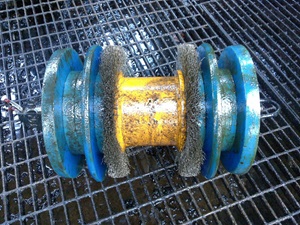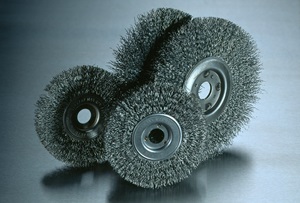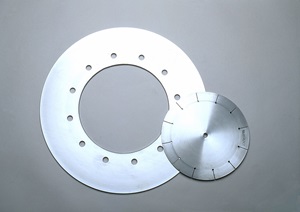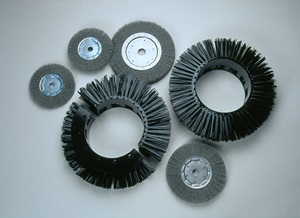Smart Pigs, Safe Pipes (Part 4): Scrubbing up for pipeline safety
Regular cleaning regime promotes health, optimizes inspection activities
What do magnets, brushes, foam, urethane cups and tungsten carbide tips have in common?
They’re all part of the spick-and-span arsenal for the pipeline industry.
While strict regulations govern the products moved through energy infrastructure, regular cleaning is essential to the health and fitness of a pipeline—for a number of reasons.
“Over time, you’re moving millions of barrels of product through a pipeline. Lines that have had particular products, or multiple products, through them over years of service will potentially see a buildup of wax, asphaltenes, silt, scale, compressor oils, things like that, on the interior walls of the pipe,” says William Petrea, a Houston-based key account manager with Baker Hughes, a GE company (BHGE), the world’s premier pipeline inspection and cleaning services company.
“Regular cleaning provides a lot of benefits. It avoids corrosion, it improves throughput, and it optimizes inspection runs.”
Pipeline operators, such as Enbridge, perform regular maintenance of their networks with mechanical cleaning “pigs,” equipped with anything from foam swabs to magnets to spring-backed brushes, to clean a pipe’s interior.
BHGE, which offers a suite of cleaning and maintenance services, may enhance the process by using an in-house cleaning chemical as an agitator or solvent for the cleaning pig—or flushing the line with a chemical gel.
“We use different solutions for different situations—specialized descaling and dewaxing pigs, pencil brushes, scrapers,” says David Latto, a Houston-based Process and Pipeline Services sales manager with BHGE. “It all depends on what you’re trying to achieve, and how stubborn the material is on the pipe wall.”
Image gallery: Smart Pigs, Safe Pipes (Part 4)
Enbridge focuses heavily on prevention to keep our crude oil pipeline network safe. In-line inspection (ILI) tools—or “smart pigs,” to use industry jargon—are highly complex pieces of machinery that use advanced imaging technology to monitor an entire pipeline for anomalies whose dimensions can be as small as a few millimeters.
BHGE is one of our primary partners in prevention, and Enbridge has entrusted BHGE with robust ILI-based pipeline diagnoses since 1998. In that time, Baker Hughes has performed more than 400 pipeline inspections across Enbridge’s pipeline network, producing more than 70,000 kilometers’ worth of inspection data.
And the cleaning process is also critical to the success of those pipeline inspections, notes Latto.
“When you’re performing an in-line inspection, you’re trying to understand the integrity of your asset—and you want to have the best data,” he says. “The true first step is to make sure your line is in a condition where you can collect that data. That’s where pipeline cleaning comes in.”
Check out our previous instalments of the Smart Pigs, Safe Pipes series:
Part 1: Getting down to the finer details
Part 2: New inspection technology doubles down on sensors
Part 3: Taking the guesswork out of pipeline strain
Check back with the @enbridge blog channel for future instalments of our Smart Pigs, Safe Pipes series.




